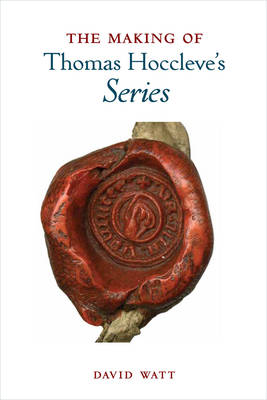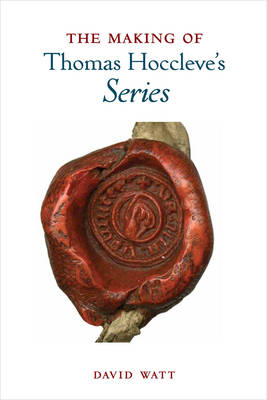
Je cadeautjes zeker op tijd in huis hebben voor de feestdagen? Kom langs in onze winkels en vind het perfecte geschenk!
- Afhalen na 1 uur in een winkel met voorraad
- Gratis thuislevering in België vanaf € 30
- Ruim aanbod met 7 miljoen producten
Je cadeautjes zeker op tijd in huis hebben voor de feestdagen? Kom langs in onze winkels en vind het perfecte geschenk!
- Afhalen na 1 uur in een winkel met voorraad
- Gratis thuislevering in België vanaf € 30
- Ruim aanbod met 7 miljoen producten
Zoeken
Omschrijving
Thomas Hoccleve's Series (1419-21) tells the story of its own making. The Making of Thomas Hoccleve's Series analyzes this story and considers what it might contribute to the larger story about book production in the fifteenth century. Focusing on four surviving manuscripts made by Hoccleve himself between 1422 and 1426, the first four chapters explore the making of the Series in context. They examine the importance of audience judgment in the selection and juxtaposition of forms, the extent to which the physical flexibility of books could serve the needs of their owners and their makers, the changing tastes of fifteenth-century readers, and the appetite for new paradigms for reform in head and members. The final chapter analyzes the most important non-authorial copy of the Series in order to ask what others made of it. While this study draws on Hoccleve's experience, it asserts that the Series offers a reflection on, not a reflection of, his conception of book production. The ironic contrast between what Hoccleve's narrator intends and accomplishes when making his book is its most redeeming feature, for it provides insight into the many conflicting pressures that shaped the way books were made and imagined in early fifteenth-century England.
Specificaties
Betrokkenen
- Auteur(s):
- Uitgeverij:
Inhoud
- Aantal bladzijden:
- 272
- Taal:
- Engels
- Reeks:
Eigenschappen
- Productcode (EAN):
- 9780859898690
- Verschijningsdatum:
- 18/07/2013
- Uitvoering:
- Hardcover
- Formaat:
- Genaaid
- Afmetingen:
- 163 mm x 237 mm
- Gewicht:
- 612 g

Alleen bij Standaard Boekhandel
+ 542 punten op je klantenkaart van Standaard Boekhandel
Beoordelingen
We publiceren alleen reviews die voldoen aan de voorwaarden voor reviews. Bekijk onze voorwaarden voor reviews.









